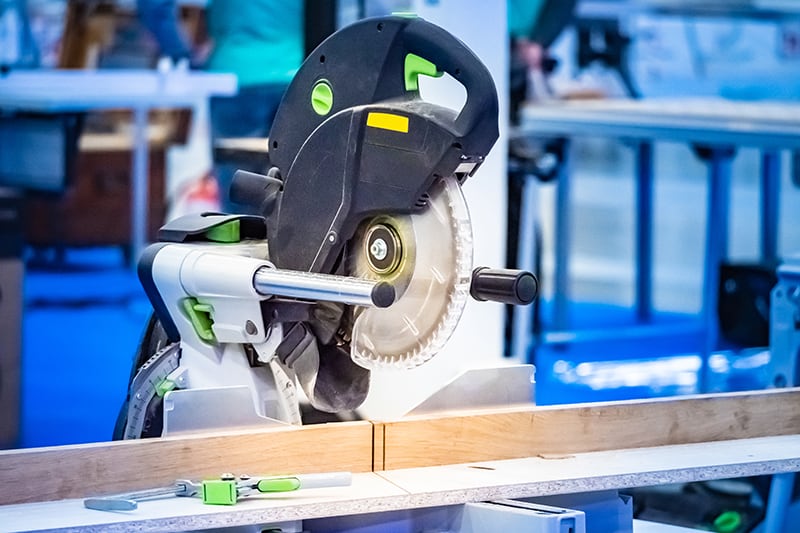Types of Electric Saws – In comparison to its predecessors, the most recent generation of power saws has a number of additional features that make demanding chores much simpler to complete. They are also easier and cleaner to operate. This article will help you pick the best saw for the job by describing the differences between some of the most common saw types.
On the Linquip website, among the many options available to you, you will find all the information you need to know about the Electric Saws, as well as information regarding this marketplace. You can count on Linquip to provide you with as much general and reliable information about this topic, whether you’re a professional or a customer looking for a proper company. We recommend you review a list of all Electric Saws Products available in Linquip. You can also be encouraged to visit Electric Saws for Sale and find the most suitable device based on your applications and demands.
Electric Vs. Hand Saws
Secondly, knowing that saws primarily fall into two categories—electric and manual hand saws—is useful. Handsaws and other powerless instruments are commonplace.This implies that you must use your own labor to generate the electricity. The variety of hand saws available may surprise you if you visit your neighborhood hardware shop. There are several variations available for both manual and electric saws, each created for a particular need.
For regular cutting purposes, it’s always a good idea to keep a classic hand saw in your toolkit. Using a back-and-forth sawing action, the broad, toothed blade can cut through wood. Yet, since an electric saw handles the labor-intensive job for you, it is perfect for many applications. Also, compared to a manual saw, an electric saw can cut more precisely.
Electric saws can be powered by a battery or an electrical outlet. Tools that are corded tend to provide more power than their battery-powered equivalents, and as long as they are plugged in, you never run out of power.
However, cordless power tools have their own set of advantages. Since you don’t need to be close to an outlet to use a cordless tool, you can move around more easily. This is particularly beneficial if you’re working outside rather than in a workshop.
Various Types of Electric Saws
12 Types of Electrical Saws include:
- Band Saw
- Jig Saw
- Chain Saw
- Chop Saw
- Circular Saw
- Reciprocating Saw
- Mitre Saw
- Compound Mitre Saw
- Rotary Saw
- Scroll Saw
- Table Saw
- Track Saw
What kinds of power saws should you own, and what are the different types? Depending on the tasks you work on, different saws are better to have in your workshop. In most circumstances, buying blades designed to cut through various materials would increase a saw’s adaptability. To handle various cutting tasks, you may swap out the blades.
You need to be aware of the many saw possibilities and their applications in order to decide which saws are most suitable for the projects you work on. The following are some of the most popular saw types:
Band Saw
A floor-standing saw called a band saw functions similarly to a jig saw, but it has the advantage of a fixed table arrangement. The blade, which is made of a long, thin band of toothed metal, may move continuously in either a vertical or horizontal direction thanks to a pulley system. Band saws can be used to cut metal, wood, or both. A band saw may also cut through various other materials, such as PVC, in addition to wood and metal.
For cutting circles, curves, and other irregular shapes, these saws are perfect. You might be able to cut many boards at once, piled on top of one another, using a band saw, depending on the length of the blade, to more quickly create matching curved pieces. The quantity of sawdust or other particles that land on top of the material you’re cutting is reduced when using a vertical band saw since the blade cuts down directly. When you need to see a line you’ve drawn on the cloth to direct your cut, this capability might be useful.
You can select a portable band saw if you need to transfer it from job site to job site. While portable cordless band saws are smaller-handed tools, they won’t have all the same features, but they still have a lot of the same possibilities if you have a steady hand.

Jig Saw
A jig saw is a small, portable electric saw that may be used both corded and cordless. It has a short blade that travels up and down at a set pace. Jig saws can cut straight lines, but their ability to cut curved and non-straight lines is what makes them so valuable. But, a steady hand is necessary to accomplish it precisely. Jig saw blades can cut through a wide range of materials, including wood, metal, plastic, and ceramic tile, but they are thin and not intended for heavy work.
A jig saw is simple to use in general, but it does require considerable accuracy to make excellent cuts. A jig saw is a great option for someone who wishes to keep a few essential pieces of equipment on hand for home projects because of this and its versatility. A jig saw is the ideal fusion of a scroll saw and a portable band saw. A jig saw is a necessary instrument if you wish to perform some light duty curved cutting using a portable tool.
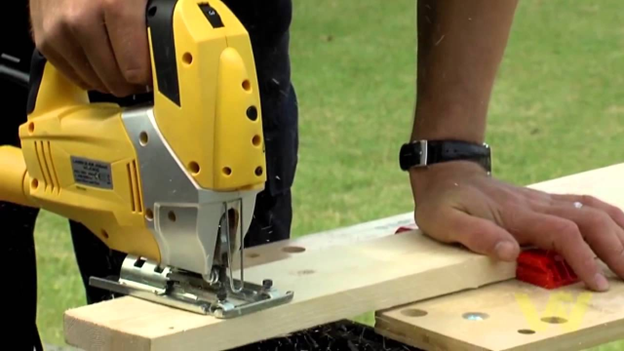
Chain Saw
You’ve undoubtedly used a chainsaw before if you’ve ever had to cut down a tree. A type of band saw known as a chainsaw gets its name from the spinning chain of pointed teeth it has. You may shape and trim hedges with a chainsaw in addition to using it to cut down trees. For wood carving, some craftsmen even utilize chainsaws.
You may also find gas-powered chainsaws on the market in addition to electric ones. A gas-powered chainsaw can power longer bars to chop through bigger trees and often has greater power than electric alternatives. However, because of the motor, they are heavier and noisier than electric alternatives. Gas chainsaws often have more power, but electric chainsaws are usually quieter and may be more practical if you don’t want to have gas on hand.
A cordless electric chainsaw is your best option if you want to match the mobility of a gas-powered chainsaw. While you won’t need to be close to an electric power source when using the chainsaw, you will need to recharge the battery once it has reached its maximum operational capacity.
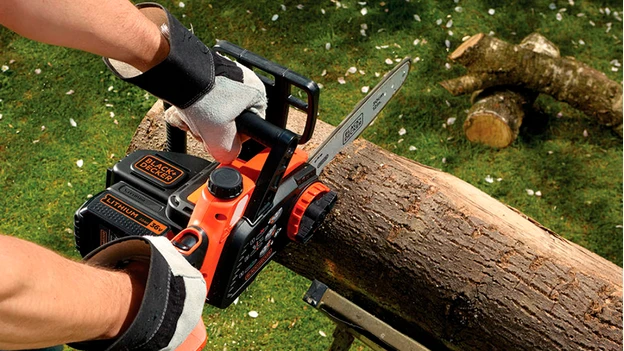
Chop Saw
A portable saw with a circular blade that descends and is made to cut straight lines rather than curved ones is referred to as a chop saw, also known as a cut-off saw or an abrasive saw.
Many materials may be sliced using a chop saw. Chop saw blades are devoid of teeth. To help them cut through diverse materials, they have abrasives. Some blades are made specifically for working with metal, while others are made for masonry. Cut-off saws, concrete saws, and abrasive saws are other names for chop saws.
A chop saw is a big, strong tool that can cut through anything. It’s one of the biggest portable circular saws you’ll find, in fact. Chop saws and mitre saws are frequently compared; however, mitre saws are superior for fine detail work. Heavy-duty tasks are best suited for chop saws.
Circular Saw
One of the most commonly used models of powered saws on the market is the circular saw, sometimes known as the buzz saw. It makes rotary cuts using an enclosed circular blade. To keep the saw in position when cutting, make sure the base is flat with the material. One of the greatest and simplest instruments for cutting straight lines is a circular saw. Because it is handled and available in both left- and right-handed versions, this portable tool is suitable for everyone.If you need more portability or might not have access to a power source, a number of well-known brands provide cordless circular saws.
A circular saw blade may be selected that is made to cut a variety of materials, including plastic, wood, metal, masonry, and more. While some circular saw blades are abrasive, toothed blades are more common. By adjusting how far the blade extends from the saw’s base, you can usually change the depth of the cut you wish to create.
Similar to the jigsaw, a circular saw is a useful tool to have on hand for a variety of tasks, including carpentry and home repair jobs. The table saw is its bigger relative, but for many do-it-yourselfers, a circular saw is sufficient for any work requiring cutting straight lines.
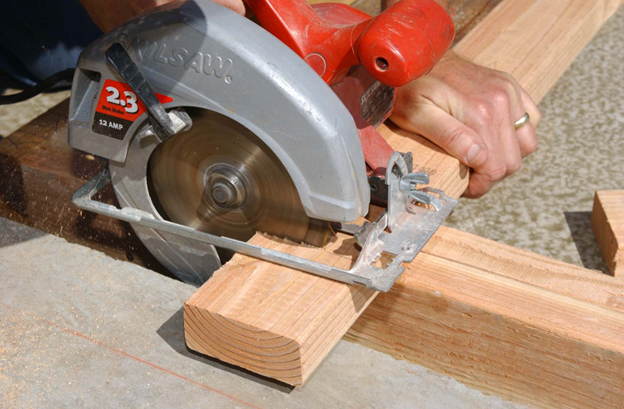
Reciprocating Saw
A reciprocating saw’s blade swiftly goes back and forth to cut, similar to a jig saw. They can cut through a variety of materials, including plastic, wood, and tubing. The metal in pipes and nails may also be cut with reciprocating saws. One of the greatest electric or cordless saws for demolition operations is the reciprocating saw.
You may quickly cut through walls, roof shingles, and other materials where nails are embedded in wood by selecting a “nail-cutting” wood blade. These activities would otherwise require many tools and be more difficult to do without a reciprocating saw. Although reciprocating saws are simple to use, it takes some practice to learn how much pressure to use when cutting in various conditions. Usually, you’ll need to keep your hold solid while applying some forward pressure and rocking the saw back and forth.
Reciprocating saws are wonderful for getting the job done when you need assistance with a demo project, but they are not the ideal option for precise work or curved cuts.
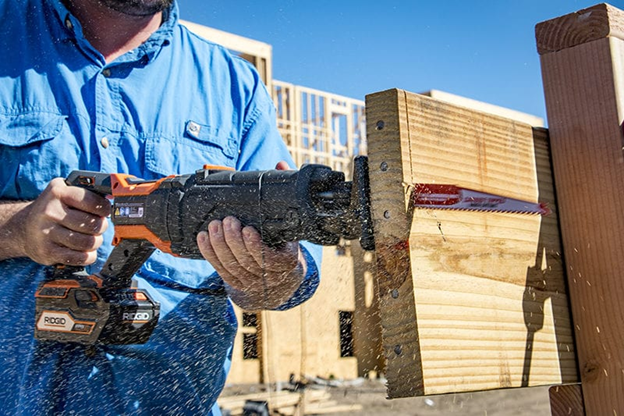
Mitre Saw
A compound mitre saw is a simplified variant of a mitre saw. It can only produce straight and miter cuts; complex cuts are not possible. This is plenty for many purposes, particularly flooring jobs. A regular mitre saw is not portable, just like a compound mitre saw. Instead, it is intended to sit on top of a table.
A mitre saw is similar to a chop saw, except it makes considerably cleaner and more accurate cuts. Sliding mitre saws are a kind of mitre saw. To cut through broader fabrics with these versions, you may drag the arm forward while cutting. Regardless of the type you pick, mitre saws are generally simple and secure to operate.
A nice all-purpose tool to have for woodworking is a mitre saw. A mitre saw is a fantastic option if you need to cut boards across or at an angle for trim work.
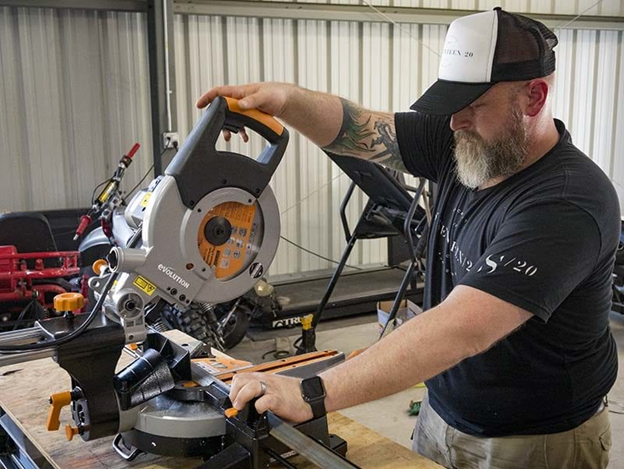
Compound Mitre Saw
A more capable variation of the conventional mitre saw is the compound mitre saw. While not being a hand saw, a compound mitre saw is nevertheless quite portable, allowing you to move it from job site to job site as necessary. The mounted arm is adjustable, and the circular blade is affixed to it.
Three different cuts may be made with this saw: straight, mitre, and compound cuts. A cross-cut on a board is a typical illustration of a straight cut you may make with a compound mitre saw. Angled cuts are mitre cuts. Usually, baseboards or molding are examples of applications where two parts are joined to form a 90-degree angle.
Compound cuts, which are effectively mitre cuts and bevel cuts combined, may be made on a board using a compound mitre saw. You can also tilt the blade as you cut to make an angular cut along two separate axes. Compound mitre saws are therefore very helpful for cutting trim pieces, and they can even aid in the creation of more complex moldings.
Rotary Saw
The blade of a rotary saw, also known as a rotary tool, spiral cut saw, or cutting tool, rotates. The cutting tool more closely resembles a power drill bit than a normal saw blade. You may cut outlines and designs in a range of thin, solid materials, including wood, drywall, aluminum, and more, with a rotary saw.
A rotary saw’s special construction allows you to cut directly into a material without first drilling a pilot hole. A pilot hole is a tiny hole that you may use to begin your cut. Bypassing this stage and cutting directly through a solid material is possible using a rotary saw.
Rotary saws may be used for a variety of additional tasks outside of cutting through walls for repairs. Since they may help with a forced entrance, rotary saws are especially useful to emergency responders like firefighters.
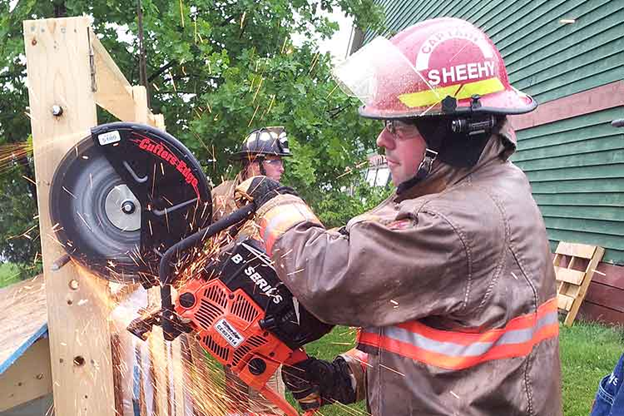
Scroll Saw
One of the best saws for cutting wood is the scroll saw. It is a flexible choice since it includes reciprocating, band, and continuous blade functions. A portable saw is not a scroll saw. Instead, the saw remains stationary, and you move the material to get it beneath the blade. The thinness of the blade on one of these instruments will probably surprise you when you first see it. What makes a scroll saw unique is the finesse of the blade.
The extraordinary degree of fineness of scroll saws is well recognized. They are the ideal instrument for creating detailed patterns and precise, clean cuts. A scroll saw is necessary if you want a saw to aid with artisanal woodworking.
There are other saws you might use to cut curves, such as a jig saw, but none will provide you with the same level of accuracy. A serious carpenter is likely to have a scroll saw in their tool arsenal, even though the ordinary DIYer might not.
Table Saw
A table saw is a large, free-standing electric saw. It features a circular blade that protrudes below the table’s top. This implies that you don’t need to lower the blade; you can simply put your material up against the blade and it will cut through.
Table saws may cut a wide variety of materials, although they are most frequently used to cut wood. Just be certain to select the appropriate blade for your application. Table saws are more versatile since they can handle both straight and angled cuts. They are frequently used to accurately size-cut boards.
With the help of a benchtop saw or handheld saw, some homeowners may be able to do the same chores as they would with a table saw and would prefer these more portable solutions. But a table saw might be a useful addition if you have a permanent workshop setup. But, bear in mind that table saws may be hazardous equipment to handle if you’re untrained, so take all essential safety measures and wear the appropriate safety gear at all times.
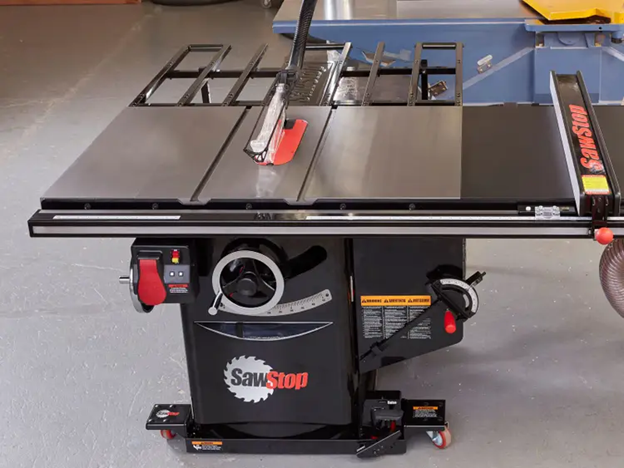
Track Saw
The track saw, commonly referred to as the plunging saw, is the final electric saw on our list. The circular blade of this saw is spring-loaded and hinged, and it has a special design that incorporates a lengthy guide rail in addition to the saw itself. In essence, a track saw combines the capabilities of a table saw and a circular saw into a single piece of machinery. A track saw is more portable than a table saw, similar to a circular saw.
You clamp or glue the guide rail onto the material you want to cut while using a track saw. The track saw is then simply used to cut parallel to the guideline. You will always obtain a flawlessly straight cut with this technique.
Track saws are capable of cutting through a variety of materials and degrees of thickness. Carpenters who work on cabinets, countertops, and other tasks that call for extreme accuracy appreciate track saws in particular. They can be useful for any job where precise plunge cuts are required.
FAQs about Types of Electric Saws
What are electric saws called?
A strong, electric hand saw is a reciprocating saw. It features a reciprocating blade that pushes and pulls, similar to a hand saw but with more power. Reciprocating saws come in light-duty and heavy-duty models.
What electric saw for cutting angles?
The best equipment for cutting angles into a range of materials, most frequently used in woodworking, is a mitre saw.
What is the most common type of saw?
A rip-cut saw is one of the most common saws that everyone who works with wood will own. Because of its adaptability and suitability for a variety of tasks, it is also likely that this is the saw that is used the most frequently. The purpose of a rip-cut saw is to cut wood against the grain.
Conclusion
You may acquire all the details you want about the Electric Saws and details about this market on the Linquip website, one of the numerous possibilities available to you. Whether you’re a professional or a client seeking for a reputable business, you can rely on Linquip to give you as much basic and trustworthy information on this subject. We advise you to look through the whole range of Electric Saws Experts and take advice from our professionals. If you need any services required for your product, you can count on Linquip and visit Electric Saws Services.
Download PDF for Types of Electric Saws
You can download the PDF format of this post from the link provided here.
Buy Equipment or Ask for a Service
By using Linquip RFQ Service, you can expect to receive quotations from various suppliers across multiple industries and regions.
Click Here to Request a Quotation From Suppliers and Service Providers
Read More on Linquip
- The 10 Best Circular Saws in the USA
- 4 Types of Miter Saws + Features & Usages
- 12 Types of Industrial Sewing Machine + Advantages
- 4 Types of Chop Saws + Applications & Characteristics
- 19 Types of Saws + Characteristic & Usage
- The 7 Best Portable Band Saws + Tips for Choosing
- Different 15 Types of Hand Saws: Clear Guide
- 8 Types of Hole Saws & Their Applications
- 4 Types of Jigsaw + Pros & Cons
- The 10 Best Chain Saw Sharpener
- The 8 Best Hand Saw
- The 10 Best Miter Saw + Guide Select
- The 10 Best Electric Chainsaw + Buying Guide
- Different Types of Bolt Heads + Benefit of Bolts and Nuts
- Different 5 Types of Fasteners: A Practical Guide
- 10 Types of Circular Saws + Characteristics & Usages
- 8 Types of Bandsaws + Their Usage & Characteristic

